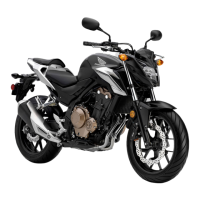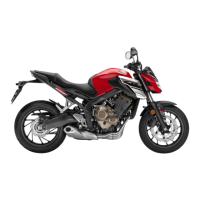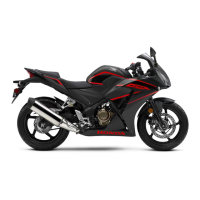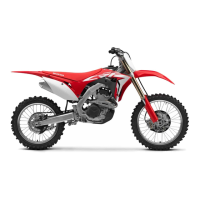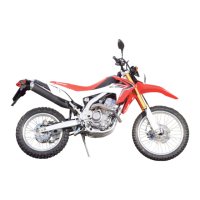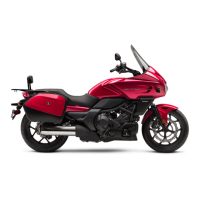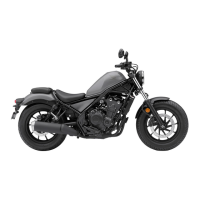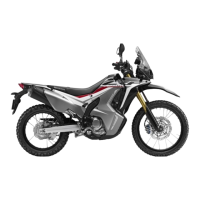
Do you have a question about the Honda CB500X/A 2018 and is the answer not in the manual?
| Displacement | 471 cc |
|---|---|
| Compression Ratio | 10.7:1 |
| Fuel System | PGM-FI electronic fuel injection |
| Ignition | Computer-controlled digital transistorized with electronic advance |
| Transmission | 6-speed |
| Final Drive | Chain |
| Front Tire | 120/70-17 |
| Rear Tire | 160/60-17 |
| Engine Type | Liquid-cooled parallel-twin |
| Bore x Stroke | 67mm x 66.8mm |
| Max Power | 35 kW (47 hp) @ 8, 600 rpm |
| Max Torque | 43 Nm @ 6, 500 rpm |
| Front Suspension | 41mm fork |
| Front Brakes | Single 320mm disc |
| Rear Brakes | Single 240 mm disc |
| Seat Height | 830 mm |
| Curb Weight | 197 kg |
Guidelines for safe riding, including routine inspections and fuel tank safety.
Information provided by safety and information labels on the motorcycle.
Precautions for safe riding, including protective apparel like helmets and gloves.
Precautions for riding, including break-in period, brakes, and riding conditions.
Advice against adding non-Honda accessories or making modifications.
Guidelines on carrying extra weight and proper loading for motorcycle stability.
Diagram showing the location of various motorcycle parts.
Explanation of the motorcycle's instrument panel display and its functions.
Description of various indicator lights on the instrument panel and their meanings.
Explanation of the function of various switches like horn, turn signals, and engine stop.
Procedure for starting the motorcycle engine, including troubleshooting.
Explanation of the 6-speed transmission and recommended shift points.
Instructions for safely opening, closing, and refueling the fuel tank.
Information on helmet holder, tool kit, and document bag locations.
Procedures for removing and installing major body components like the battery and seat.
Instructions for checking, adding, and changing engine oil and filter.
Procedure for changing the air cleaner element.
Instructions for checking and adding coolant to the reserve tank.
Guidance on checking brake fluid, pads, and adjusting the brake light switch.
Procedure for checking the side stand operation and its safety function.
Instructions for inspecting slack, wear, and adjusting the drive chain.
Guidance on checking and adjusting clutch lever freeplay.
Instructions for checking and adjusting throttle grip freeplay.
Procedure for cleaning the crankcase breather tube.
Instructions for adjusting headlight aim, brake lever, suspension, and windscreen height.
Diagnosing and resolving issues when the motorcycle engine fails to start.
Troubleshooting steps for overheating, indicated by the high coolant temperature warning light.
Explains the meaning of various warning lights like oil pressure and PGM-FI.
Information on fuel gauge failure indications and other system warnings.
Procedures for emergency tire repair and wheel removal for puncture service.
Overview of instruments, controls, document bag, and ignition cut-off system.
Guidelines for cleaning, polishing, and protecting the motorcycle's surfaces.
Recommendations for storing the motorcycle for extended periods, including battery care.
Procedures and precautions for safely transporting the motorcycle.
Information on choosing sensible cleaners and recycling motorcycle wastes.
Location of the VIN and engine serial number for registration and parts ordering.
Details on exhaust and noise emission requirements and control systems.
Information on the motorcycle's catalytic converter and how to protect it.
Guidance on using oxygenated fuels and potential issues.
Information on ordering service manuals and other Honda publications.
Explanation of warranty coverage, responsibilities, and dealer service.
Contact information for American Honda Motor Co., Inc. and Honda Canada Inc.
How to report safety defects to NHTSA and American Honda Motor Co., Inc.
Key physical and dimensional specifications of the motorcycle.
Technical data for tires, fluids, spark plugs, engine oil, and drive chain.
